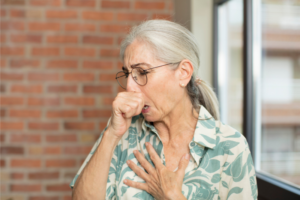Lung nodules are small growths that form in your lungs. They are defined as less than 3cm in diameter (less than one and one-fifth inches). They are separate from all other parts of the lung. They are found in approximately 1.6 million people per year in the USA. More than half of those individuals have more than one nodule.
The best news is that 95% of all nodules are benign and do not contain cancerous cells. They usually don’t cause symptoms, and most people don’t realize they have them until they’re detected by chance during a routine imaging test like a CT scan or X-ray.
The term “nodule” can certainly be concerning, and it may make you wonder if you’re at risk of lung cancer. The good news is that at least 95% of lung nodules are benign — that means they’re not cancerous, and most don’t pose an immediate threat to your health.
As lung specialists in Midtown East, New York, New York, Drs. David Kamelhar and Eric Teller at Kamelhar-Teller Pulmonology are here to help you understand your diagnosis and what it means.
In this blog post, we’re taking a closer look at benign lung nodules and answering one of the most common questions we hear: “Are benign lung nodules dangerous to my health?”
Common causes of benign lung nodules
Benign lung nodules are noncancerous growths that can form in your lungs. Most benign nodules are less than 3 centimeters in size, and they’re often discovered during imaging tests ordered for other reasons. They may be CT scans of the chest done for cancer screening, CT scans done looking for other abnormalities, such as cardiac calcium score (“incidental” lung nodules”), CT scans of the neck or CT scans of the abdomen.
Lung nodules can form for a variety of different reasons. Some of the most common causes include:
- Infections, like tuberculosis or fungal infections
- Chronic inflammation from conditions like sarcoidosis or rheumatoid arthritis
- Scar tissue from an injury or infection
- Benign tumors, like hamartomas or lipomas
The highest likelihood of finding a lung nodule is in a CT scan done in a person with known cancer in another part of his or her body.
The likelihood of finding a lung nodule increases with age (4 per 10,000 at age 18-24 and 200 per 10,000 individuals aged 85-89)
The likelihood of finding a nodule is similar in men and women.
The single most important factor in determining what should be the “next step” in evaluating a nodule is the size followed by whether the nodule is solid or hazy in appearance.
It is very important to remain aware that nodules that are found on a CT of an active or recent cigarette smoker(within 15 years) are of significant concern.
The doctors at Kamelhar-Teller Pulmonology follow the US Preventive Services Task Force recommendations that include low-dose lung cancer CT screening for individuals who have smoked or who smoke at the present time
If we identify lung nodules during a routine imaging test, we may order additional tests to determine if the nodule(s) are benign or cancerous. Some diagnostic tests for benign lung nodules include a follow-up CT scan, a PET scan, or a biopsy.
Most of the time, benign lung nodules like these are harmless and do not require any treatment.
What benign lung nodules mean for your health.
We may recommend monitoring the nodules because there are some cases where benign nodules may cause other health problems. Nodules that grow over time may need to be removed.
Some nodules can also cause symptoms like coughing, wheezing, or chest pain, depending on where they’re located in your lungs. In rare cases, benign nodules can increase your risk of lung cancer and require close monitoring.
If you’re diagnosed with lung nodules, there’s no need to panic — but it is important to find out if they’re benign and whether you need additional treatment. Book an appointment at Kamelhar-Teller Pulmonology online or call us at 212-685-6611 to get a customized care plan.



